We all know by now that the pandemic had an unprecedented ripple effect on the job market. One of the long-term, and potentially greatest implications that we are seeing is that employees play a more significant role in dictating the job market than in years past.
Maybe you need to revisit corporate policies regarding remote work, or perhaps you are struggling to hire and retain hourly employees. Regardless, employers must rethink employee management, strategies, and experience to better understand and prioritize their employee’s wants and needs.
Why Does Understanding the Employee Experience Matter?
Given the recent increased difficulty in not only attracting but also retaining talent, it is imperative for employers to understand their employee experience today and the evolution moving forward. In the current environment, money is not the only driver, so employers must take time to understand who the employees are and what matters to them while exploring the motivators and barriers of the overall employee experience.
Matt Hoffman, head of talent at M13, a technology venture capital firm in New York City, expanded on this in a recent SHRM article stating, “Talent is not resigning from the workforce itself; people are just reconsidering what’s most important to them when presented with multiple compelling opportunities. Employees want to be part of high-performing teams with healthy cultures,” Hoffman noted. “So for companies, trying to drive retention through compensation is not enough.”
Ernst & Young agrees and believes this can be especially true with Millennial and Gen Z workers. The recent EY 2021 Gen Z Segmentation Study found that almost two-thirds of Gen Z feel it is very or extremely important to work for an employer that shares their values and place less importance on making a lot of money in their career.
How Do You Better Understand the Employee Experience?
The answer is empathy, a word that gets thrown around a lot these days, but can serve as a crazy powerful tool to truly understand your employee experience. Whether you are overseeing an hourly workforce doing hard manual labor, or you manage a professional services firm with salaried individuals sitting in cubicles (or working remotely at home!), you must talk to your employees to uncover their truths and only then can you piece together the experience.
While these conversations can happen virtually, meeting your employees in their work environment not only helps them feel more comfortable to be open and share, but also allows for potential “ah-ha” moments through observation.
Define your problem and set your guardrails before starting. Think about other potential audiences outside of current employees that you might consider speaking with to help fully understand the experience. These conversations could be with potential employees in the market for a new position (to understand what they are looking for in an employer), past employees who left their roles (to have a deeper conversation than a typical exit interview), and even HR leadership in related industries (to learn more about their workforce and similar issues that they face). All of these audiences can provide a unique lens to the employee experience. Think about it as if you are writing a book – and each of these audiences provide key insights into the different chapters that help tell the overall story.
In the end, if you listen and watch closely enough, odds are that you will uncover both functional and emotional needs of your current and future employees that will elevate their experience and put you in a position to better retain your employees and attract new talent.


